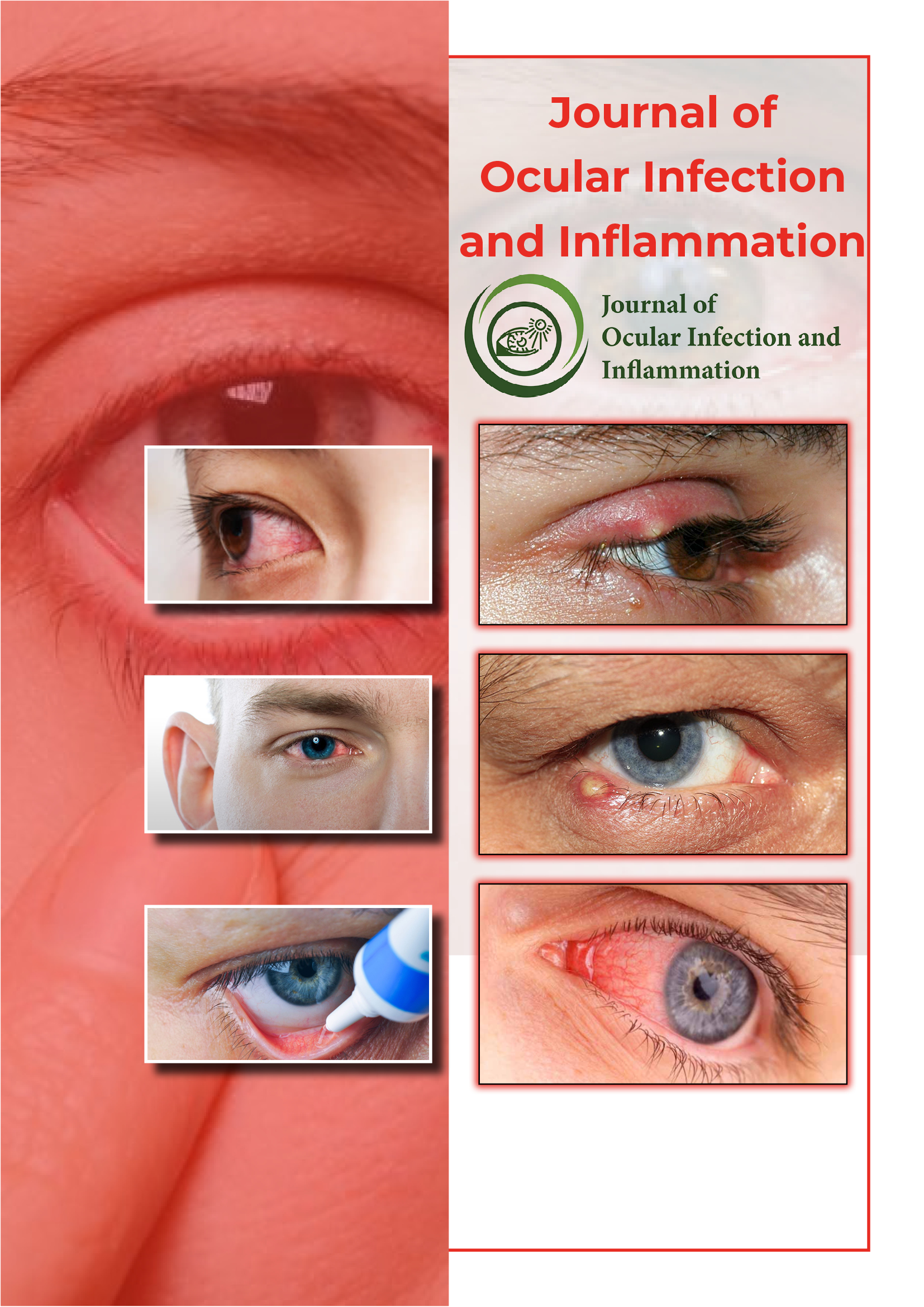Useful Links
Share This Page
Journal Flyer

Open Access Journals
- Agri and Aquaculture
- Biochemistry
- Bioinformatics & Systems Biology
- Business & Management
- Chemistry
- Clinical Sciences
- Engineering
- Food & Nutrition
- General Science
- Genetics & Molecular Biology
- Immunology & Microbiology
- Medical Sciences
- Neuroscience & Psychology
- Nursing & Health Care
- Pharmaceutical Sciences
Commentary - (2024) Volume 5, Issue 1
Innovations in Ophthalmic Interventions: Advancing Vision Preservation
Sopita Kanokwan*Received: 26-Feb-2024, Manuscript No. JOII-24-25616; Editor assigned: 28-Feb-2024, Pre QC No. JOII-24-25616 (PQ); Reviewed: 13-Mar-2024, QC No. JOII-24-25616; Revised: 20-Mar-2024, Manuscript No. JOII-24-25616 (R); Published: 27-Mar-2024, DOI: 10.35248/JOII.24.05.120
Description
In the search of ophthalmology, the management of severe eye infections affects significant challenges. Endophthalmitis and infectious keratitis, if left untreated or managed insufficiently, can compromise the overall health of the eye. However, the advancements in surgical techniques, particularly Pars Plana Vitrectomy (PPV) and therapeutic keratoplasty, ophthalmologists now have effective instruments at their disposal to address these vision-compromising conditions.
Pars Plana Vitrectomy (PPV)
Pars plana vitrectomy is a surgical procedure that involves the removal of the vitreous gel from the eye's posterior segment. Initially developed for the treatment of vitreoretinal disorders such as retinal detachment and retinal defects, PPV has found application in the management of severe infectious conditions affecting the posterior segment, including endophthalmitis.
Endophthalmitis, characterized by inflammation of the intraocular fluids and tissues, is often caused by bacterial or fungal infections following intraocular surgery, trauma, or systemic spread. In cases where the infection progresses rapidly or is refractory to conventional therapy, PPV plays a vital role in removing the infectious material and reducing the microbial burden within the eye.
The benefits of PPV in endophthalmitis lie in its ability to provide direct visualization of the posterior segment, assisting in targeted removal of infected vitreous material and allowing for the administration of intravitreal antibiotics. By clearing the vitreous cavity of inflammatory debris and pathogens, PPV helps to minimize the spread of infection and promotes ocular tissue healing.
Therapeutic keratoplasty
Infectious keratitis, characterized by corneal inflammation and ulceration secondary to microbial entry, represents another challenging entity in ophthalmic practice. While medical therapy remains the foundation of treatment for most cases of infectious keratitis, severe and progressive cases may necessitate surgical intervention in the form of therapeutic keratoplasty.
Therapeutic keratoplasty involves the selective removal of the infected corneal tissue followed by the transplantation of donor corneal tissue to restore corneal integrity and promote healing. This procedure aims not only to remove the infectious microbe but also to address corneal thinning and perforation, which can lead to severe vision loss if left untreated.
Advancements in surgical techniques and postoperative management have improved the outcomes of therapeutic keratoplasty for infectious keratitis. The use of modern imaging techniques such as Anterior Segment-Optical Coherence Tomography (AS-OCT) allows for accurate determination of the extent of corneal involvement, maintaining more targeted tissue removal and graft placement. Moreover, the availability of newer surgical instruments and suture materials allows for improved surgical accuracy and stability, reducing the risk of postoperative complications such as graft rejection and wound separation.
Challenges and future directions
Despite the significant progress made in the surgical management of endophthalmitis and infectious keratitis, several challenges remain. These include the emergence of antimicrobial resistance, which complicates the choice of antibiotics and necessitates ongoing surveillance and research into alternative treatment strategies. Additionally, the high cost and technical complexity of advanced surgical procedures may limit their accessibility, particularly in resource-limited settings.
Looking ahead, future research efforts should focus on improving existing surgical techniques, optimizing antibiotic delivery methods, and exploring novel complementary therapies to improve the efficacy of PPV and therapeutic keratoplasty. Collaborative multicenter studies and registries can provide valuable insights into the long-term outcomes and safety profiles of these interventions, informing clinical decision-making and guiding best practices.
In conclusion, pars plana vitrectomy and therapeutic keratoplasty are essential components of ophthalmologists for the management of endophthalmitis and infectious keratitis. These surgical interventions offer the potential of preserving vision and maintaining ocular health in the face of severe infectious insults. However, continued innovation, collaboration, and investment in research are essential to further improve outcomes and expand access to these transformative therapies for patients worldwide.
Citation: Kanokwan S (2024) Innovations in Ophthalmic Interventions: Advancing Vision Preservation. J Ocul Infec Inflamm. 05:120.
Copyright: © 2024 Kanokwan S. This is an open-access article distributed under the terms of the Creative Commons Attribution License, which permits unrestricted use, distribution, and reproduction in any medium, provided the original author and source are credited.

